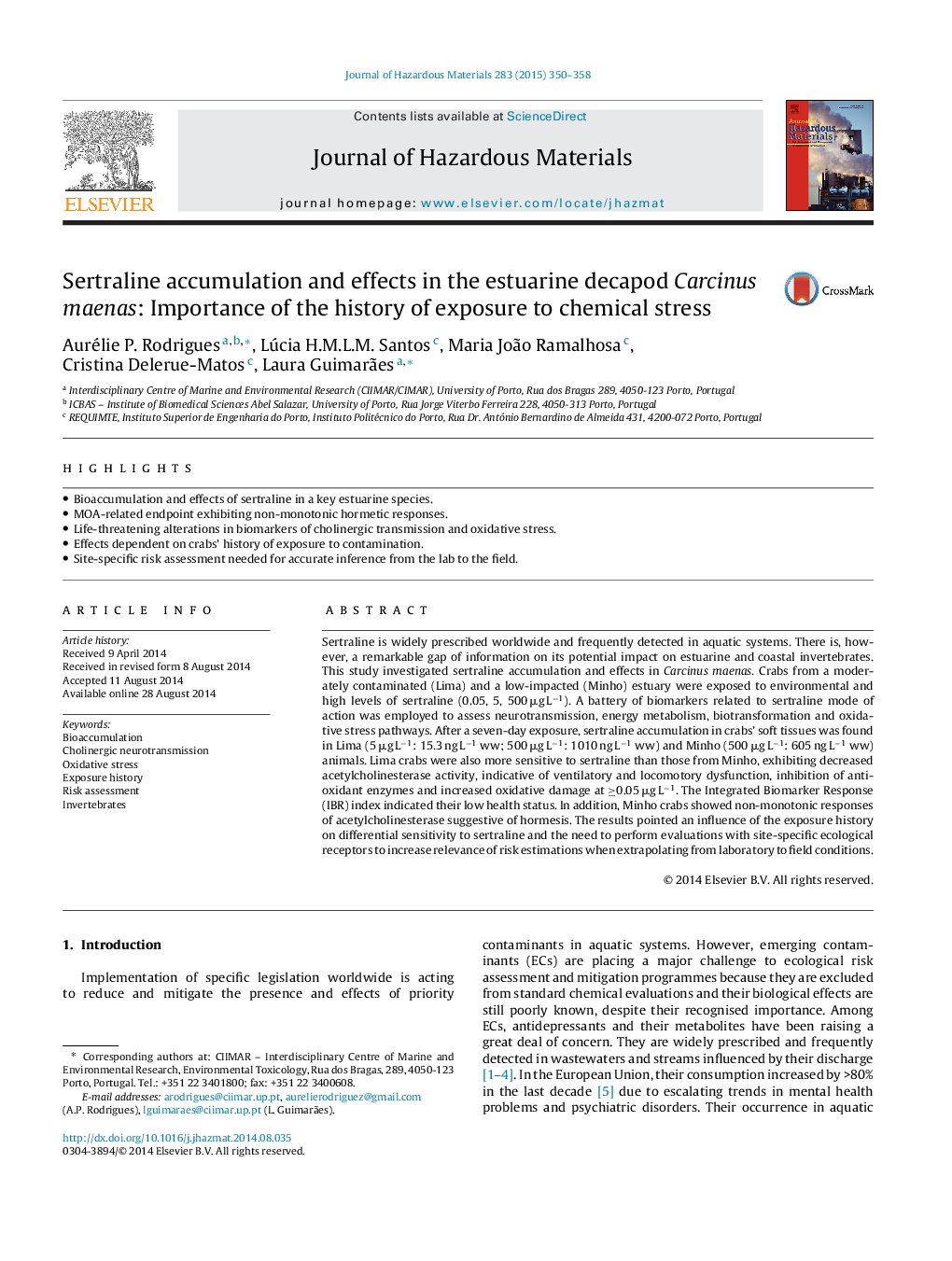| Article ID | Journal | Published Year | Pages | File Type |
|---|---|---|---|---|
| 576278 | Journal of Hazardous Materials | 2015 | 9 Pages |
Abstract
Sertraline is widely prescribed worldwide and frequently detected in aquatic systems. There is, however, a remarkable gap of information on its potential impact on estuarine and coastal invertebrates. This study investigated sertraline accumulation and effects in Carcinus maenas. Crabs from a moderately contaminated (Lima) and a low-impacted (Minho) estuary were exposed to environmental and high levels of sertraline (0.05, 5, 500 μg Lâ1). A battery of biomarkers related to sertraline mode of action was employed to assess neurotransmission, energy metabolism, biotransformation and oxidative stress pathways. After a seven-day exposure, sertraline accumulation in crabs' soft tissues was found in Lima (5 μg Lâ1: 15.3 ng Lâ1 ww; 500 μg Lâ1: 1010 ng Lâ1 ww) and Minho (500 μg Lâ1: 605 ng Lâ1 ww) animals. Lima crabs were also more sensitive to sertraline than those from Minho, exhibiting decreased acetylcholinesterase activity, indicative of ventilatory and locomotory dysfunction, inhibition of anti-oxidant enzymes and increased oxidative damage at â¥0.05 μg Lâ1. The Integrated Biomarker Response (IBR) index indicated their low health status. In addition, Minho crabs showed non-monotonic responses of acetylcholinesterase suggestive of hormesis. The results pointed an influence of the exposure history on differential sensitivity to sertraline and the need to perform evaluations with site-specific ecological receptors to increase relevance of risk estimations when extrapolating from laboratory to field conditions.
Keywords
Related Topics
Physical Sciences and Engineering
Chemical Engineering
Chemical Health and Safety
Authors
Aurélie P. Rodrigues, Lúcia H.M.L.M. Santos, Maria João Ramalhosa, Cristina Delerue-Matos, Laura Guimarães,
